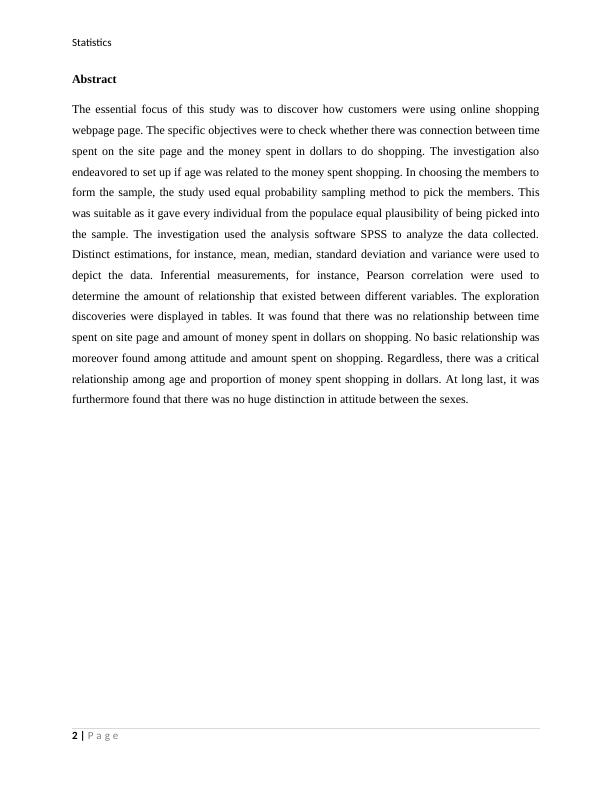Statistics of Online Shopping
Assignment briefing sheet for Stats Assignment A in the module Investigative Methods.
9 Pages1659 Words32 Views
Added on 2023-02-01
About This Document
This study focuses on how customers use online shopping websites and explores the relationship between time spent on the site and money spent. The study also examines the relationship between age and shopping expenditure. The sample was selected using equal probability sampling method and the data was analyzed using SPSS software. The findings show no significant relationship between time spent and money spent, but a significant relationship between age and shopping expenditure.
Statistics of Online Shopping
Assignment briefing sheet for Stats Assignment A in the module Investigative Methods.
Added on 2023-02-01
ShareRelated Documents
End of preview
Want to access all the pages? Upload your documents or become a member.
Statistics: Online Shopping Study
|9
|1733
|92
Statistics: Online Shopping and Consumer Behavior
|9
|1642
|53
Investigative Methods
|9
|1251
|1
Analysis of Association between Annual Income and Online Cosmetic Expenditure
|14
|3445
|312
Investigative Statistics
|10
|1267
|490
Customer Behaviour For An Online Store
|8
|1045
|496



